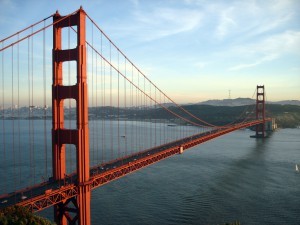Crowdsourcing, a concept born in mid 2000s in the USA, is one of the tools available to companies willing to embrace open innovation.
As a definition of Open Innovation, one could say that for a company, it represents the extension of the sphere of innovation actors. The crowdsourcing fully represents that logic.
Crowdsourcing consists of leveraging the collective intelligence of the crowd. Crowdsourcing = ‘sourcing’ from the crowd
In order to have a good understanding of how crowdsourcing works, one should answer the following questions:
➔ Sourcing what? What does the company wish to supply itself with? What is the company searching for?
➔ Sourcing from whom? Who are the people or the participants in that crowd that the company appeals to?
These questions have multiple answers but constants that exist, the ones that allow talking about crowdsourcing, are the following:
➔ Crowdsourcing involves innovation, in every sense. Therefore, the answer to the question “sourcing on what?” is: ideas, projects, concepts, or even simple advice.
➔ The question “sourcing from whom?” should be answered more generally: from a great number of people. Without that, one cannot talk about crowdsourcing!
We’ll quote several practical cases to have a better understanding of what it means in concrete terms.
Practical example number 1: a company wishes to launch a new product but they are not sure that it will meet the demand and they would like to make enquiries to the public about the improvements that could be brought. Through a crowdsourcing platform, this company asks thousands of participants to give their opinion about the product and to potential improvements to it.
Practical example number 2: a company wishes to launch a new advertising campaign that highlights the advantages of their products. However, they couldn’t find the powerful message that would turn the operation into a success. To get there, they decide to ask net surfers on their Facebook page to imagine the most efficient and most original message. They will offer a reward to the best proposals with a voucher, free products etc.
Practical example number 3: a company reflects upon a new manner of communicating. They wish to adapt their communication strategy to new channels but they don’t have the necessary expertise. Therefore, they decide leverage a crowdsourcing platform in order to have the highest number of contributions possible. The participant who will have the most innovative idea will receive 1,000 Euros.
Practical example number 4: a company wishes to improve its brand image. To do so, they decide to launch a call for projects called “building a better world” on their website. The participants could suggest projects aimed at eradicating world hunger, preventing wars, limiting epidemics, reducing unemployment, any of that within a limited, previously established budget. A voting system will be put in place to elect the winner: to get a higher number of votes, the authors are invited to share their projects on Facebook, therefore multiplying the reach of the contest.
As one can see, crowdsourcing can have very varied applications. For the company, it can be used either to conceive or to optimize a new product, to create an advertising campaign or to simply improve its image before the public. The crowdsourcing operations can be made on dedicated platforms (nowadays, there are hundreds of them), on the company’s website or directly on social networks.
There are multiple advantages to crowdsourcing:
- Crowdsourcing is an economical solution. To boost participation prize systems can be put in place but costs are fully controlled.
- Crowdsourcing allows the participation of a great number of people. Certain crowdsourcing campaigns can involve a million participants. With so many brains connected together, this can only produce very promising results!
- Crowdsourcing allows the development of closer connections between the company and the public, as well as the adaptation of brand communication.
picture credits https://www.flickr.com/photos/mrlins/






